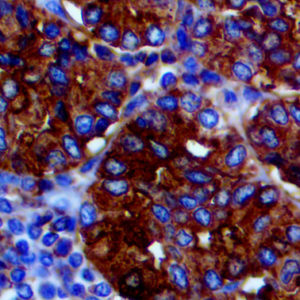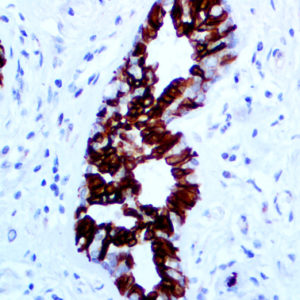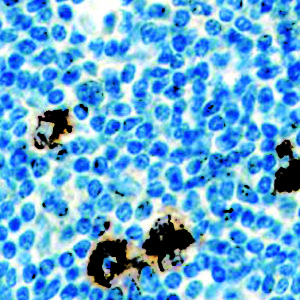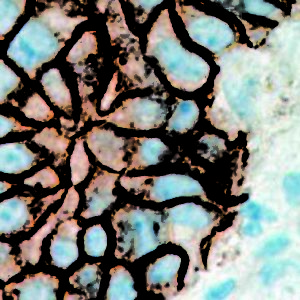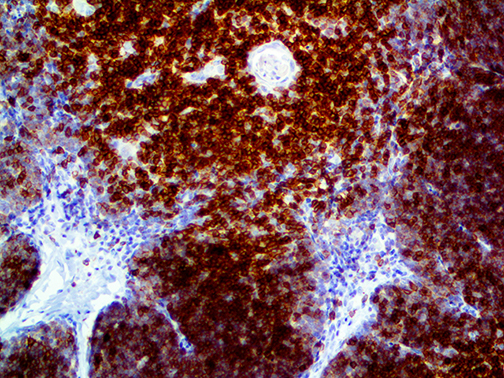
IHC of CD5 on an FFPE Thymus Tissue
| Intended Use | For In Vitro Diagnostic Use | |||||||||||||||||||||||||||||||||||
| Summary and Explanation | CD5 is a glycoprotein monomer with an MW of 67 kDa belonging to the scavenger receptor cysteine-rich (SRCR) family of extracellular domain-like structures. It possesses a large cytoplasmic domain suitable for signal transduction. CD5 is a T-cell marker that also reacts with a range of neoplastic B-cells, e.g., B-cell Chronic Lymphocytic Leukemia (B-CLL), B-cell Small Lymphocytic Lymphoma (BSLL), and Mantle Cell Lymphoma. CD5 is expressed in T-lymphocyte subsets and is modulated during cellular activation; however, it does not react with granulocytes or monocytes. | |||||||||||||||||||||||||||||||||||
| Antibody Type | Rabbit Monoclonal | Clone | RED1 | |||||||||||||||||||||||||||||||||
| Isotype | IgG | Reactivity | Paraffin, Frozen | |||||||||||||||||||||||||||||||||
| Localization | Membranous | Control | Tonsil, Lymph Node, Spleen, Thymus | |||||||||||||||||||||||||||||||||
| Presentation | CD5 is a rabbit monoclonal antibody derived from cell culture supernatant that is concentrated, dialyzed, filter sterilized and diluted in buffer pH 7.5, containing BSA and sodium azide as a preservative. | |||||||||||||||||||||||||||||||||||
| Availability |
| |||||||||||||||||||||||||||||||||||
| Note: For concentrated antibodies, please centrifuge prior to use to ensure recovery of all product. | ||||||||||||||||||||||||||||||||||||
